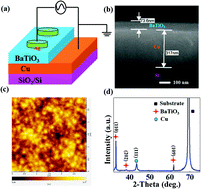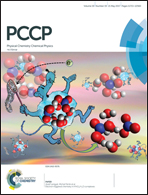Bipolar resistive switching with negative differential resistance effect in a Cu/BaTiO3/Ag device†
Abstract
We demonstrate that a bipolar non-volatile resistive switching behaviour with negative differential resistance (NDR) effect is realized in a Cu/BaTiO3/Ag device, which was deposited on a Si substrate via magnetron sputtering equipment. We suggest that the bipolar resistive switching is dominated by the trapping/detrapping of electrons at the BaTiO3–Cu interface. In addition, we demonstrate that the device exhibits good performance, including a large on/off ratio, high reliability and long retention time. Therefore, BaTiO3 may become a good candidate for application in resistive switching random access memory (RRAM) devices.



 Please wait while we load your content...
Please wait while we load your content...